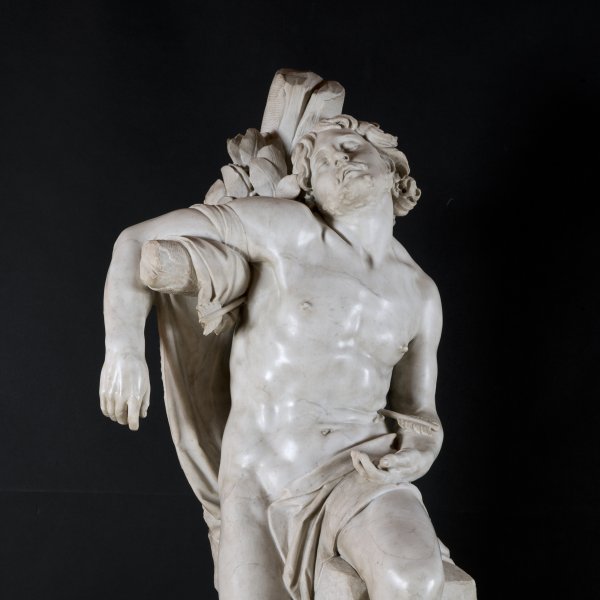Gian Lorenzo Bernini
Gian Lorenzo Bernini is considered to be the most important Italian Baroque artist, a multitalented man who successfully turned his hand to various disciplines such as architecture, sculpture, painting and stage design. Two of his first biographers, Filippo Baldinucci (1624‒1697) and his son Domenico Bernini (1657‒1723), emphasised two of his outstanding qualities: his keen imagination and his tireless work. Gian Lorenzo was born in Naples on 7 December 1598. He was the son of the Florentine sculptor Pietro Bernini (1562‒1629), a late Mannerist artist in whose workshop he trained and who introduced him to the circles of powerful Roman families such as the Borghese and the Barberini. In 1605 the Bernini family moved from Naples to Rome, a city where Gian Lorenzo pursued his career as an artist and from which he was absent only for brief periods except for a stay in Paris in 1665 when he was summoned by King Louis XIV to work on the design for the palace of the Louvre.
He produced a significant group of sculptures for Cardinal Scipione Borghese (1577‒1633) whose design, conception and technical virtuosity marked a genuine revolution in the field of sculpture. They include Aeneas, Anchises and Ascanius (1618‒19), the Rape of Proserpina (1621‒22), David (1623‒24) and the spectacular group of Apollo and Daphne (1622‒25), all of which belong to the collection of the Galleria Borghese. Pope Urban VIII (1623‒44) appointed him as the architect of St Peter’s, making him the most important artist in Rome, and during Urban’s papacy he executed the baldachin of the high altar (1624‒35) and the large sculpture of Saint Longinus (1629‒38) in the crossing. Under Innocent X (1644‒55) he designed the most famous fountain in Rome, that of the Four Rivers (1647‒51) in the Piazza Navona. During those years Bernini also worked for private clients and produced another of his masterpieces: the Cornaro chapel in Santa Maria della Vittoria (1647‒53), which is notable for the sculpture group of the Ecstasy of Saint Teresa. The third pope with whom the artist collaborated was Alexander VII (1655‒67), during whose rule he decorated the Chair of Saint Peter (1657‒66) and designed the large colonnade (1656‒67) that greets visitors. Prominent among his architectural works are the Palazzo Chigi-Odescalchi, begun in 1664, and the church of Sant’Andrea al Quirinale (1658‒76); the palace enjoyed significant influence and was used as a model outside Italy. Significant sculptures are his portrait busts, especially those of his wife Costanza Bonarelli (1636‒37) and Louis XIV of France (1665). As a painter Bernini produced notable self-portraits, portraits of young men and religious works, as well as drawings and caricatures.
Bernini died in Rome in 1680. His fame and appreciation declined as a result of the taste for Neoclassicism, but he progressively regained his prestige during the twentieth century and was finally acknowledged as one of the figures who contributed the most to building the image of the city of Rome.

